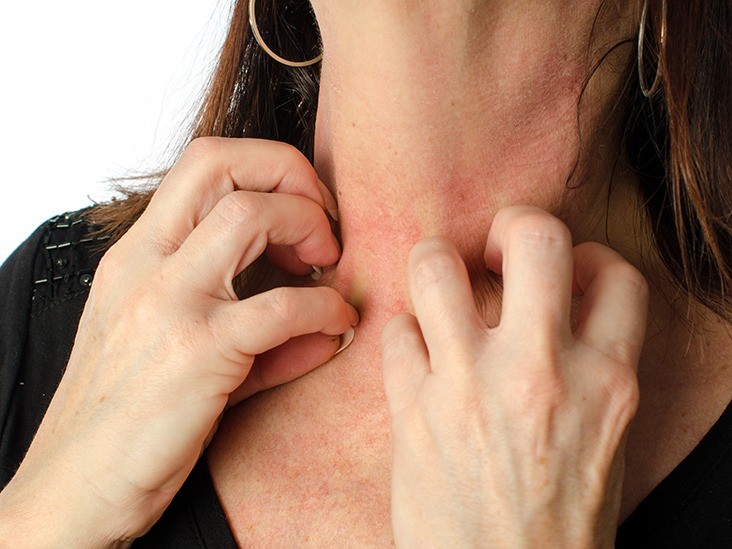Published - Tue, 09 Aug 2022

ANAPHYLAXIS AND ITS CLINICAL FEATURES
1. The acute, potentially fatal illness known as anaphylaxis is brought on by the release of chemical mediators from mast cells and basophils. The primary preformed chemical mediator is histamine. Proteoglycans, enzymes in the Hageman factor pathway, neutrophil chemotactic factor, and eosinophil chemotactic factor are more examples.
2. Anaphylactic versus anaphylactoid reactions
a) Unlike anaphylactoid reactions, which happen through a variety of pathways and directly degrade mast cells, anaphylactic reactions entail antibody-antigen interactions mediated by immunoglobulin E (IgE).
i) Anaphylaxis
- — In IgE-mediated reactions, the antigen has already been exposed, specific IgE has been produced by plasma cells, and the IgE has been able to bind to receptor sites on mast cells and basophils. This results in the release of preformed mediators, particularly histamine, which triggers a chain of subsequent events that end in anaphylaxis.
- — One-third of all occurrences of anaphylaxis are caused by food, and other causes include antibiotics, foreign proteins (such as streptokinase), hymenopteran venom, and preservatives. Idiopathic conditions make up about one-third of all cases.
ii) Anaphylactoid reactions
- —Anaphylactoid reactions occur via mechanisms that do not involve IgE. The sequence of events involves the direct release of mediators from mast cells and basophils.
- — Causes of anaphylactoid reactions include human plasma and blood products, direct histamine releasers (e.g., opiates, curare, dextran, radiocontrast media), and miscellaneous agents and processes, such as exercise, physical factors, vibration, nonsteroidal anti-inflammatory drugs (NSAIDs), and mastocytosis.
b) Anaphylactic and anaphylactoid reactions are clinically the same because comparable mediators produce similar target organ sequelae. Treatment for both reactions is directed at the end-organ signs and is the same. Because of these similarities, the term anaphylaxis will be used to encompass both IgE and non-IgE reactions.
CLINICAL FEATURES
1. Symptoms are most likely to occur minutes after exposure to the triggering agent but may occur in seconds to a few hours. Early or subtle signs and symptoms of anaphylaxis include cutaneous flushing, pruritus, voice change, and a sense of impending doom. Usually, the later the symptoms occur, the less severe the reaction.
2. Clinical findings prominently involve the skin (urticaria), the upper airways (laryngeal edema, hoarseness, stridor), the lower airways (bronchospasm), and the cardiovascular system (hypotension, vasodilation, dysrhythmia, myocardial infarction [MI]), and the gastrointestinal system (abdominal cramps).
3. Death may occur from respiratory causes (70%) or cardiovascular causes (25%). (Autopsy findings include acute pulmonary hyperinflation, laryngeal edema, visceral congestion, pulmonary edema, intra-alveolar hemorrhage, urticaria/angioedema, and MI.)
Clinical Manifestations of Anaphylaxis
| Organ System | Reaction |
| Cutaneous | - Diaphoresis - Flushing - Pruritus - Piloerection - Urticaria - Angioedema |
| Head, ears, eyes, nose, and throat | -Conjunctivitis -Metallic taste -Hoarseness -Rhinorrhea/nasal congestion -Stridor |
| Pulmonary | - Dyspnea - Cough - Tachypnea - Wheezing |
| Cardiovascular | - Tachycardia - Dysrhythmia - Hypotension |
| Gastrointestinal | -Abdominal cramps -Diarrhea Nausea and vomiting |
| Neurologic | - Altered mental status - Dizziness - Seizure |
DIFFERENTIAL DIAGNOSES: The diagnosis of anaphylaxis is generally readily apparent based on history and clinical findings but may sometimes be confused with overlapping or other distinct entities.
Differential diagnosis involves the following:
1. Judging whether the symptoms and signs represent a simple allergic or pseudoallergic reaction (e.g., asthma exacerbation, urticaria), as opposed to anaphylaxis
2. Considering whether some of the symptoms and signs represent a secondary process (e.g., MI).
3. Determining if a completely different type of problem could be occurring (e.g., drug intoxication, hypovolemic shock).
Created by
Rigomo Team
Rigomo is a leading online education platform that offers a wide range of courses to help individuals enhance their skills and achieve their career goals. With our user-friendly interface and expert instructors, we strive to provide high-quality education to everyone, anytime and anywhere. Join us today and take the first step towards a brighter future.
Rigomo is an e-learning platform that was founded in 2019 by a team of dedicated professionals with a passion for revolutionizing the way people learn. The platform offers a range of online courses that cover various industries, including business, technology, healthcare, and more.
Rigomo's courses are designed to be interactive and engaging, with a focus on practical skills that learners can apply in their careers. The platform uses a combination of video lectures, quizzes, and hands-on projects to help learners master the subject matter.
Rigomo is committed to providing affordable and accessible education to people around the world. The platform offers a range of pricing options, including monthly and annual subscriptions, as well as pay-as-you-go options for individual courses.
Since its launch, Rigomo has received numerous accolades for its innovative approach to e-learning. The platform has helped thousands of learners across the globe acquire new skills and advance their careers.
As Rigomo continues to grow, the team remains committed to providing high-quality education that is accessible to all. The platform is constantly updating its courses and features to ensure that learners have access to the latest tools and technologies.
Comments (0)
Search
Popular categories
Health and Wellness
231Skill Development
7Technology
5Community Impact
2Success story
2Creativity
1Latest blogs

DeepSchool: The Story of an Idea That Refused to Sit Still
Tue, 02 Dec 2025

Transforming Emergency Care: The Story Behind Rigomo's Revolutionary PPMMP Course
Sun, 12 May 2024

Empowering Rural Healthcare: How Pogiko's AI is Bridging the Gap in Medical Services
Thu, 25 Apr 2024

Write a public review